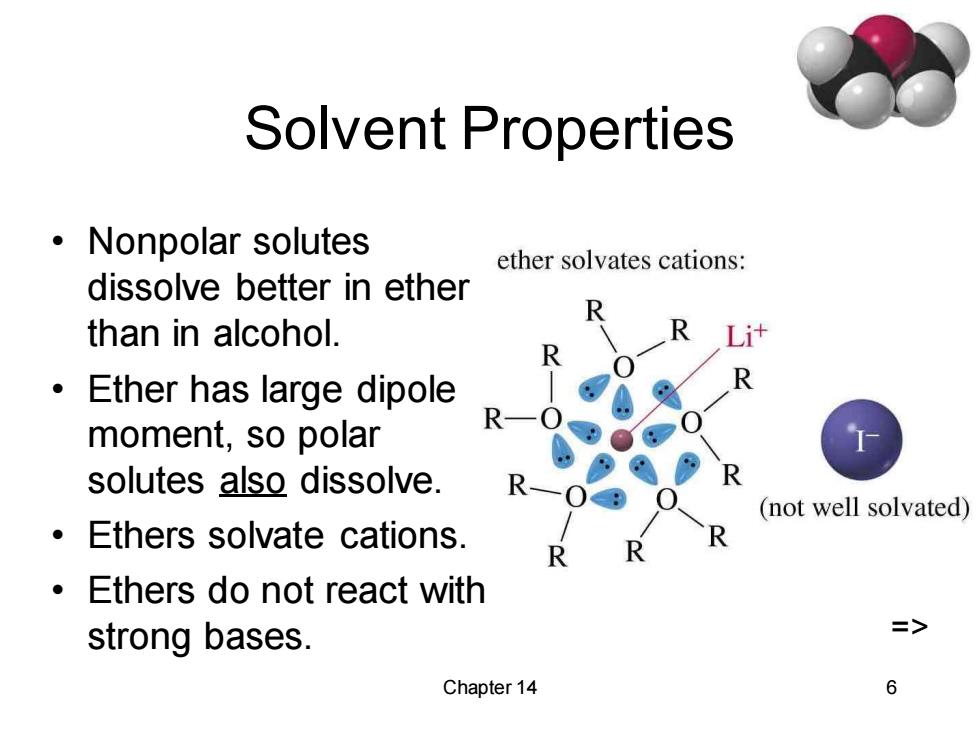
Solvent Properties ·Nonpolar solutes ether solvates cations: dissolve better in ether than in alcohol. 。 Ether has large dipole R- moment,so polar solutes also dissolve. (not well solvated) Ethers solvate cations. Ethers do not react with strong bases. => Chapter 14 6
Chapter 14 6 Solvent Properties • Nonpolar solutes dissolve better in ether than in alcohol. • Ether has large dipole moment, so polar solutes also dissolve. • Ethers solvate cations. • Ethers do not react with strong bases. =>
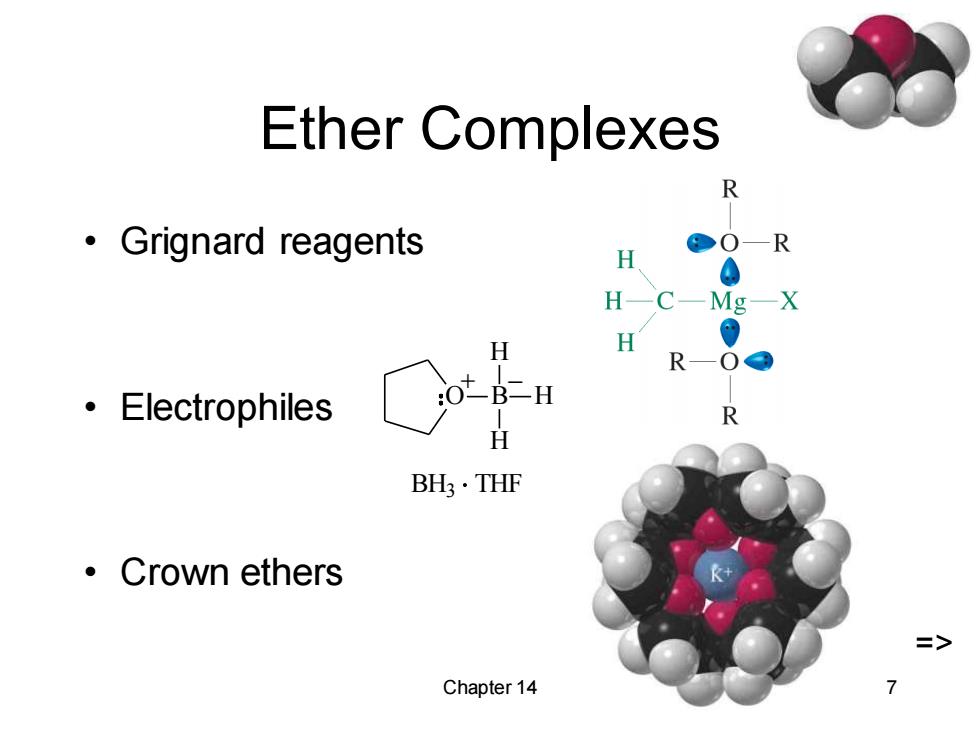
Ether Complexes R ·Grignard reagents O-R H H-C-Mg-X H H R-O© ·Electrophiles :OtB二H R H BH3·THF ·Crown ethers Chapter 14
Chapter 14 7 Ether Complexes • Grignard reagents • Electrophiles • Crown ethers O B H H H + _ BH3 THF =>
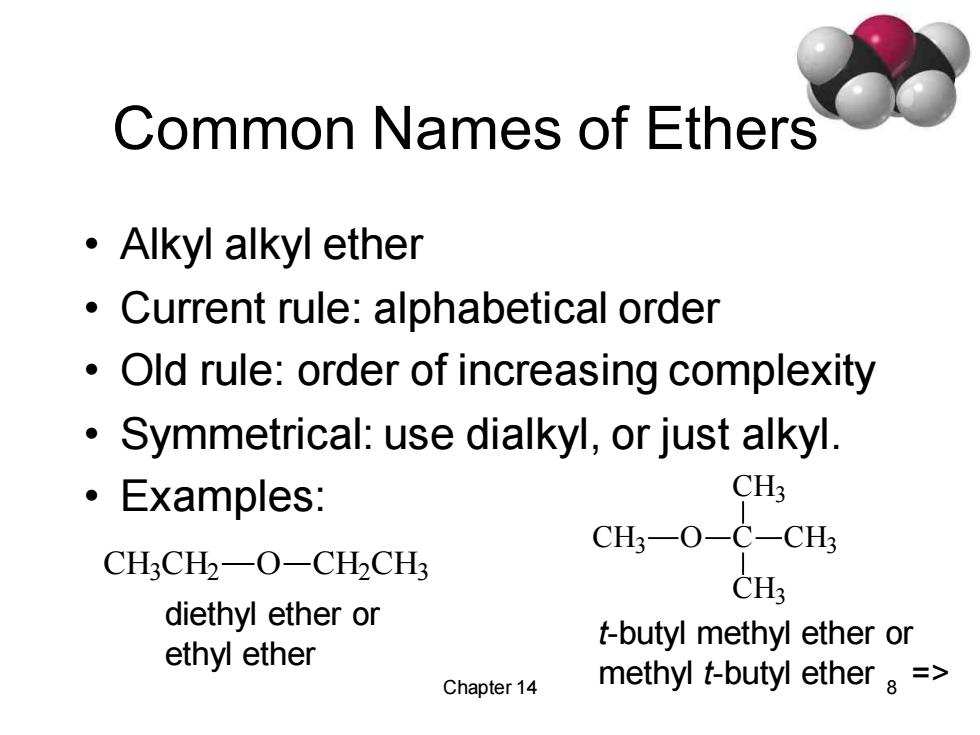
Common Names of Ethers ·Alkyl alkyl ether Current rule:alphabetical order Old rule:order of increasing complexity Symmetrical:use dialkyl,or just alkyl. 。Examples: CH3 CH3-O-C-CH3 CH3CH2-O-CH2CH3 CH3 diethyl ether or t-butyl methyl ether or ethyl ether Chapter 14 methyl t-butyl ether a =
Chapter 14 8 Common Names of Ethers • Alkyl alkyl ether • Current rule: alphabetical order • Old rule: order of increasing complexity • Symmetrical: use dialkyl, or just alkyl. • Examples: CH3 CH2 O CH2 CH3 diethyl ether or ethyl ether CH3 O C CH3 CH3 CH3 t-butyl methyl ether or methyl t-butyl ether =>
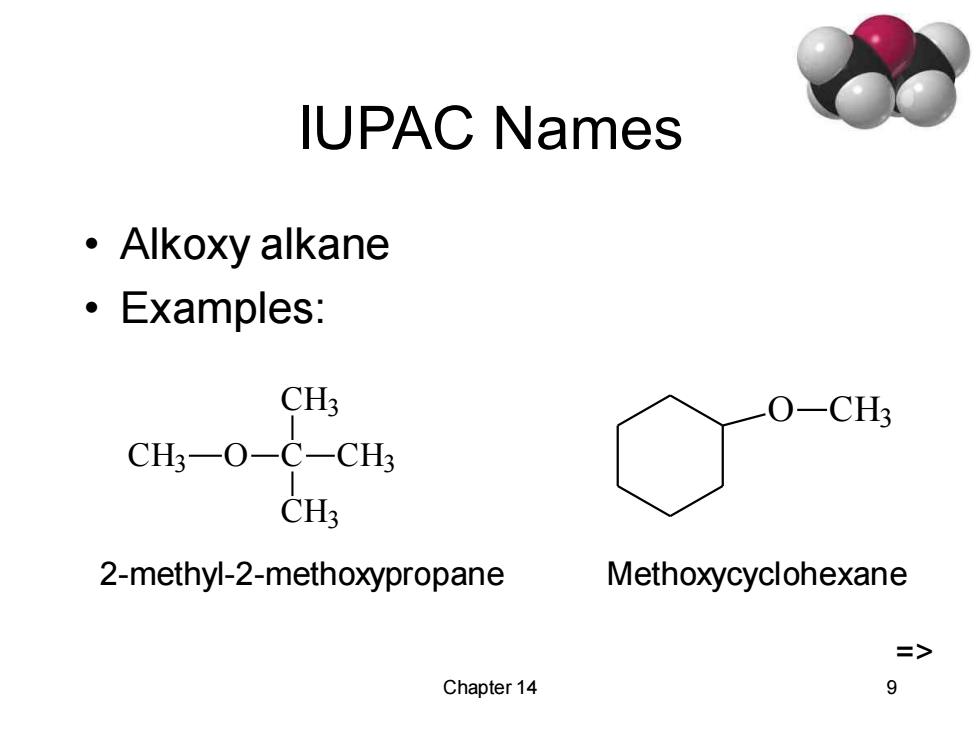
IUPAC Names ·Alkoxy alkane 。Examples: CH3 O-CH3 CH3-O-C-CH3 CH3 2-methyl-2-methoxypropane Methoxycyclohexane => Chapter 14 9
Chapter 14 9 IUPAC Names • Alkoxy alkane • Examples: CH3 O C CH3 CH3 CH3 2-methyl-2-methoxypropane O CH3 Methoxycyclohexane =>
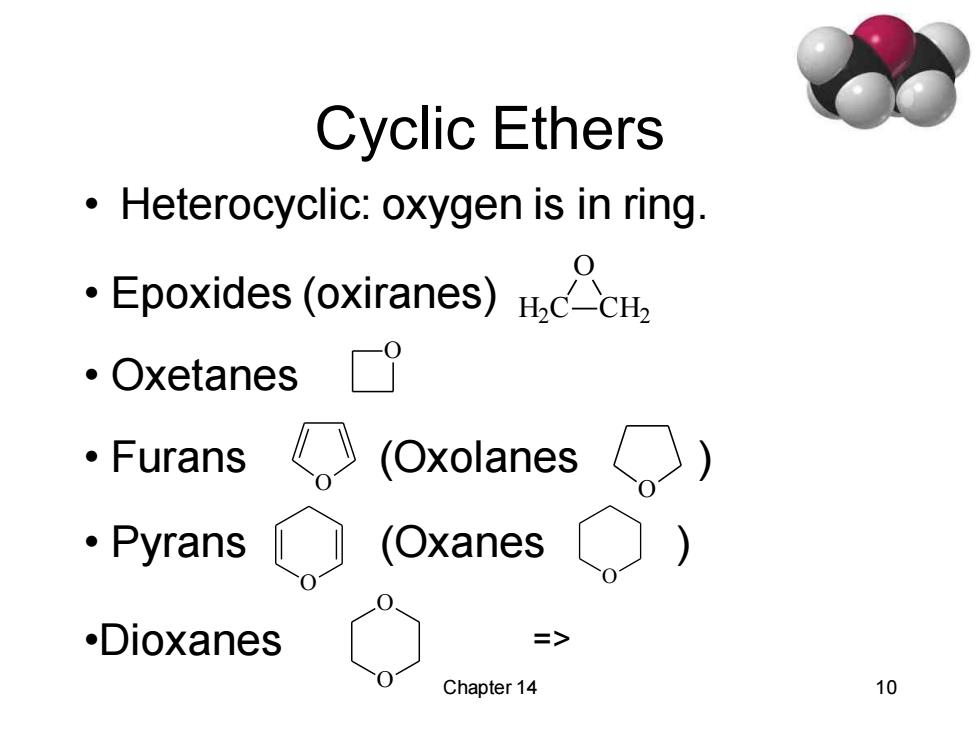
Cyclic Ethers Heterocyclic:oxygen is in ring. .Epoxides (oxiranes) ·Oxetanes 9 ·Furans (Oxolanes ·Pyrans 〔)(Oxanes .Dioxanes => Chapter 14 10
Chapter 14 10 Cyclic Ethers • Heterocyclic: oxygen is in ring. • Epoxides (oxiranes) H2C CH2 O • Oxetanes O • Furans (Oxolanes ) O O • Pyrans (Oxanes ) O O •Dioxanes O O =>